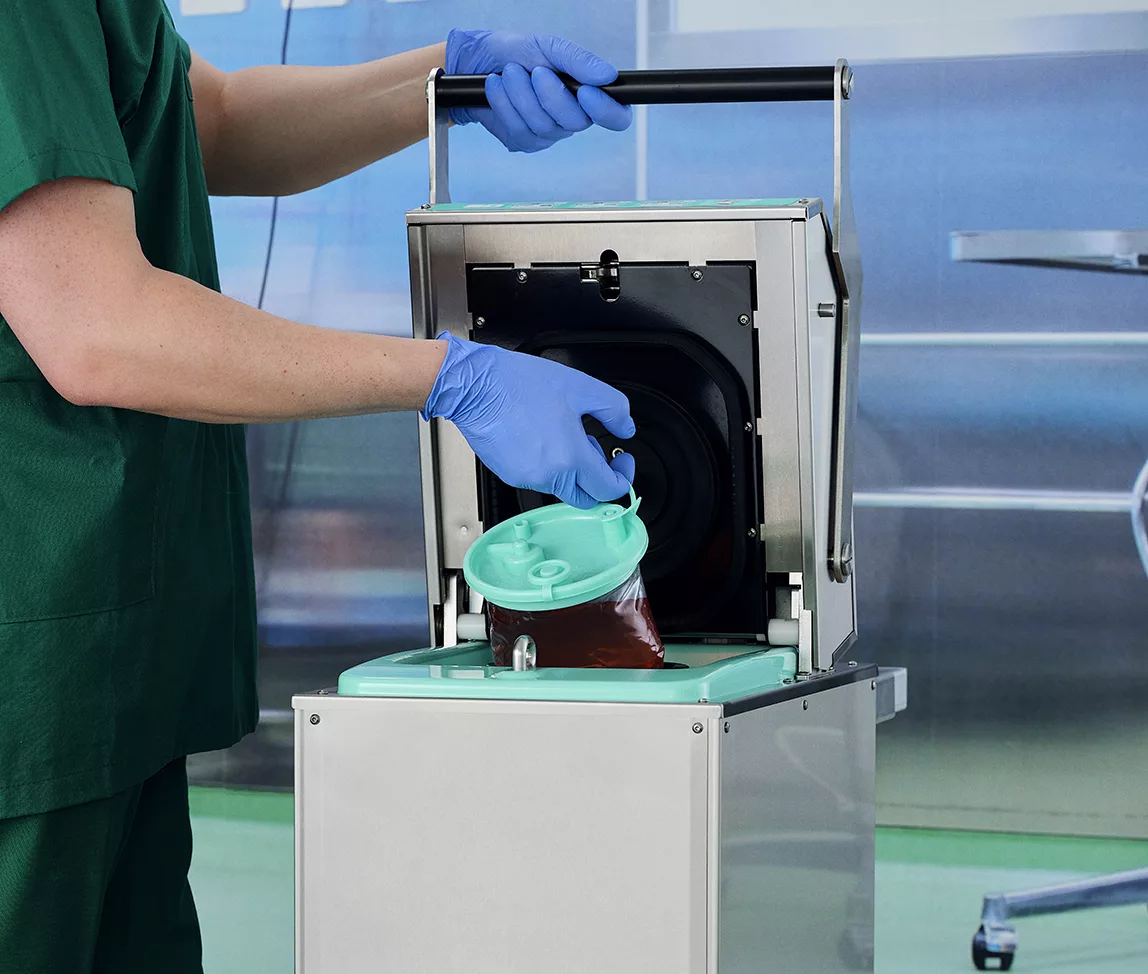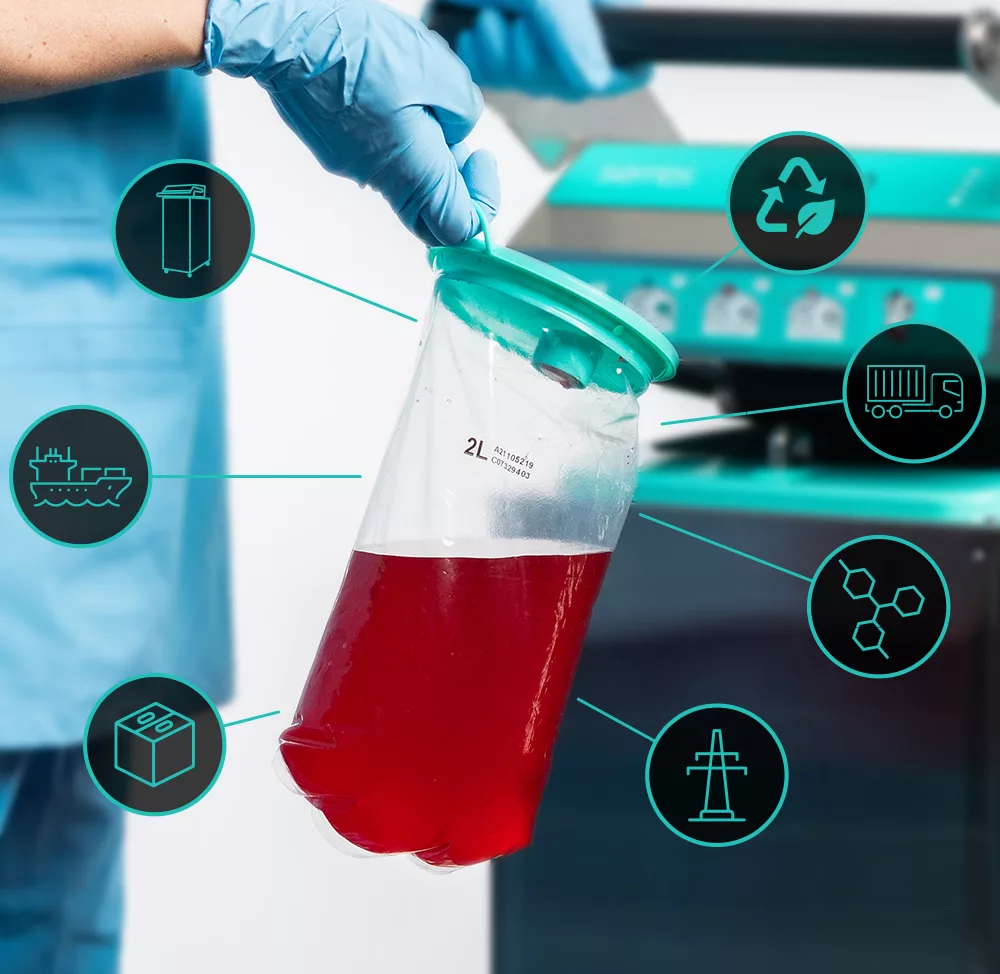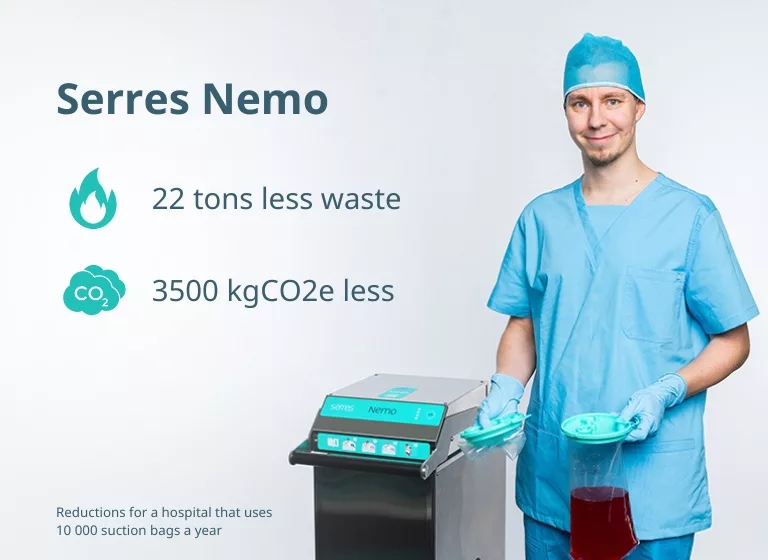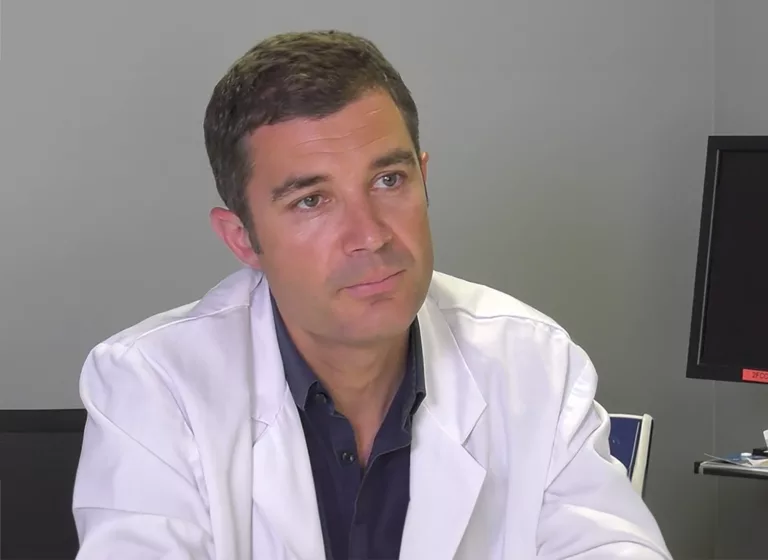
Forerunner in surgical fluid management
We share our customers’ passion for patient care and work every day to make surgical fluid management safe and sustainable.
Serres’ surgical suction system is designed to support efficient and safe fluid management.
Serres Suction bags support more than 75,000 operations around the world each day.

Serres Suction bags –
safety as a priority
Healthcare professionals’ and patients’ safety is our priority. We support their work with a closed loop system that eliminates contact with collected blood and fluids.
Extremely durable single-use suction bags provide confidence in the most hectic situations.
Our solutions allow surgeons and nurses to take quality for granted.

Reducing surgical fluid waste with Serres Nemo
With efficient collection and disposal of
a suction bag´s content healthcare providers can gain up to 97% cost savings from waste handling and reduce up to 97% carbon emissions released during the waste incineration.
Serres Nemo for on-site Serres Suction bag fluid disposal.

Contributing to a more sustainable healthcare
Sustainability is at the core of everything we do. We contribute to the sustainable development goals of the United Nations. We feel that we can help our customers the most by reducing the effect our products have on the climate.








